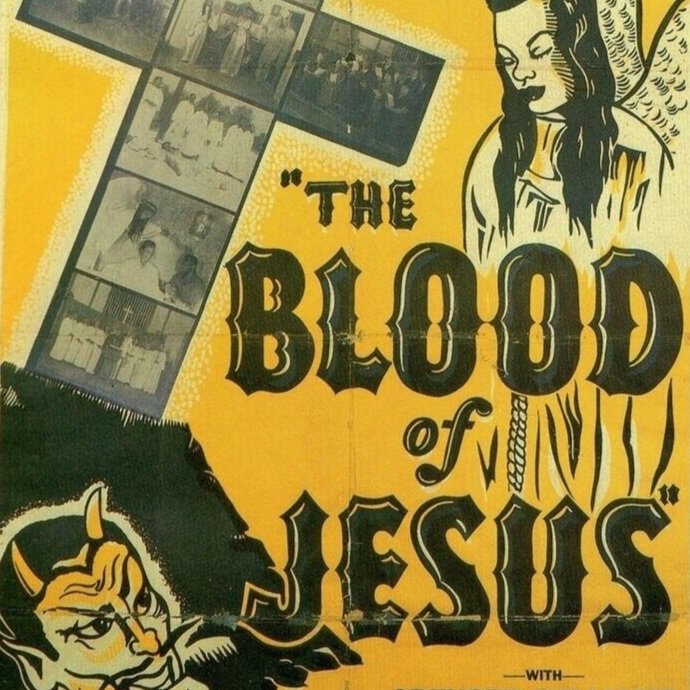
The Flying Ace
with an introduction by Barbara Tepa Lupack
Unlike the stereotypical roles that blacks usually played in studio films, Norman’s characters in The Flying Ace were dignified and dutiful examples of racial achievement.
The most impressive of all was war hero Captain Stokes, a hero more aspirational than actual. By giving his audience the prominent and accomplished characters they wanted to see on screen, Norman lauded black ambition, encouraged race uplift, and celebrated race pride.
Plot
A skilled flyer and decorated war hero, Captain Stokes returns from military service overseas to resume his former job as head of the intelligence department of one of the big American railroads. Called upon to investigate a theft and the curious disappearance of paymaster Kimball, he finds that all signs point to the guilt of stationmaster Thomas Sawtelle. But as Stokes continues to follow the clues, he solves the mystery, exonerates Sawtelle, and exposes the real villains. Throughout his investigation, he is ably assisted by his former mechanic, one-legged “Peg” (Norman’s favorite actor, who appears in all of the Norman productions) and by Sawtelle’s daring daughter Ruth.
Significance in Race Film History
Like his better-known contemporaries Oscar Micheaux and George and Noble Johnson, Richard E. Norman was among the finest race filmmakers of the silent era. Unlike Micheaux or the Johnsons, however, Norman was a white Southerner who hailed from Jacksonville, Florida, a city at one time considered “The Winter Film Capital of the World.”
An entrepreneur and inventor, Norman, by his early twenties, had entered the entertainment industry as film developer. He soon became a producer of “home-talent” movies, pictures that were based on short scripts that he wrote himself and built around stock footage of exciting events such as car crashes and train wrecks.
Turning his talents to even bigger things, Norman returned to his home state of Florida and began making feature-length race films primarily for black audiences. After acquiring the former “Eagle Film City” studio in Jacksonville, he became the first early race producer to own and operate his own production facility.
Ultimately, before the transition to sound films forced him out of the filmmaking end of the industry, Norman produced seven popular films, including two race Westerns starring black rodeo star Bill Pickett (The Bull-Dogger and The Crimson Skull), a South Seas adventure set on a desert island (Regeneration), and a thriller about the discovery of oil on ranchland in Oklahoma (Black Gold). His best-known, most successful, and only extant film was a mystery-adventure story, The Flying Ace. That film drew on the public’s fascination with new transportation technologies, especially the technology of flight.
Unlike the stereotypical roles that blacks usually played in studio films, Norman’s characters in The Flying Ace were dignified and dutiful examples of racial achievement. They included a black stationmaster, a black dentist, a black deputy, and a daring heroine Ruth (played by distinguished black actress Kathryn Boyd). But the most impressive of all was war hero Captain Stokes (played by J. Laurence Criner, Boyd’s real-life husband). Notably, Stokes—whom Norman depicts wearing his military uniform throughout the film—was a hero more aspirational than actual. Blacks, after all, had been denied opportunities to serve as pilots in World War One and were restricted in their service in other military branches. By giving his audience the prominent and accomplished characters they wanted to see on screen, however, Norman lauded black ambition, encouraged race uplift, and celebrated race pride.
- Barbara Tepa Lupack
“Perhaps the greatest testament to the novelty of The Flying Ace was…its success in showing blacks in roles they should have had yet in reality were denied. That notion of racial success and racial uplift—the promise of advancement through individual achievement—was central to Norman’s film and consistent with contemporary black ideology.”
— Barbara Tepa Lupack
PROGRAM LECTURER
Barbara Tepa Lupack
“Richard E. Norman’s The Flying Ace”
Barbara Tepa Lupack, former professor of English and academic dean at SUNY, was Fulbright Professor of American Literature both in Poland and in France. From 2015-2108, she served as New York State Public Scholar. She was also the Helm Fellow at Indiana University (2013), the Lehman Fellow at the Rockwell Center for American Visual Studies (2014), and the Senior Fellow at the Norman Rockwell Museum in Stockbridge, MA (2017-2018). She is author or editor of more than twenty-five books, including Literary Adaptations in Black American Cinema: From Micheaux to Morrison (University of Rochester Press, 2002; expanded ed., 2010), Richard E. Norman and Race Filmmaking (Indiana University Press, 2013), Early Race Filmmaking in America (Routledge, 2016), Silent Serial Sensations: The Wharton Brothers and The Magic of Early Cinema (Cornell University Press, 2020), and Being There in the Age of Trump (Rowman & Littlefield/Lexington Books, 2020).
Film Credits
Cast: J. Laurence Criner (Captain Billy Stokes), Boise De Legge (Blair Kimball), Steve “Peg” Reynolds (Peg), George Colvin (Thomas Sawtelle), Sam Jordan (Dr. Maynard), Harold Platts (Finley Tucker), Lyons Daniel (Jed Splivins), Kathryn Boyd (Ruth Sawtelle), Dr. R. L. Brown (Howard McAndrews).
Producing credit: Norman Film Manufacturing Company.
Director and Producer: Richard E. Norman.








